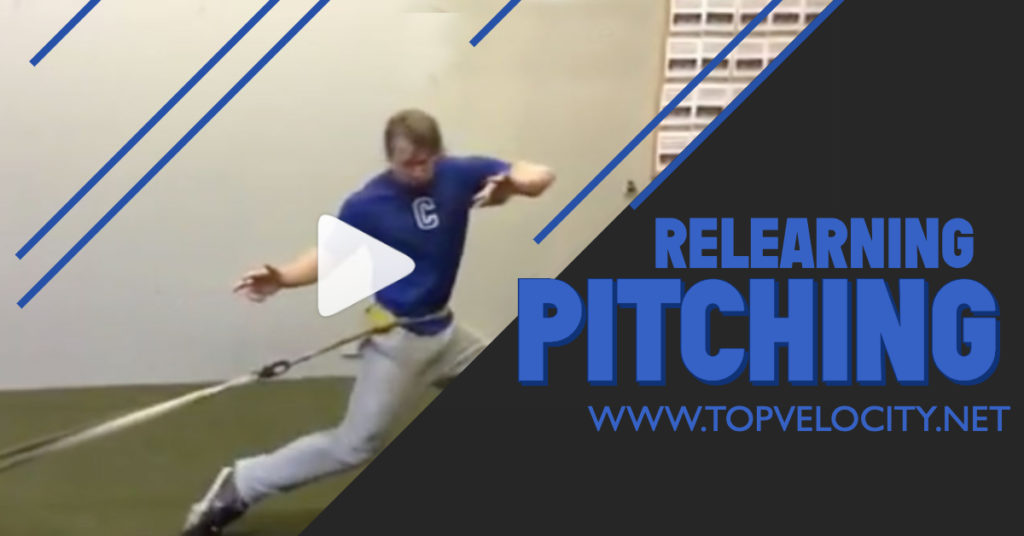
The most intriguing part of the stages of learning a complex motor skill in my practice has been the relearning of the skill. Relearning pitching or any skill is a completely different experience than acquiring the skill the first time. The more successful pitchers that train at my facility usually will come back again the next off-season to continue to improve. If it is the second time through for them they are always challenged by the fact that they have atrophied the skill and must work hard again to redevelop it for the new season. They usually are experiencing the highs from the previous season and this knowledge that they must relearn the skill and revisit all of last off-season’s hard work is a big buzz killer for them to say the least.
To best understand the relearning pitching process of an elite motor skill I refer to Anderson’s (1982) theory of cognitive skill acquisition drawing from Fitts and Posner’s three stages of learning (Magill & Anderson, 2017). Anderson’s corresponding three stages of learning are the declarative, transitional and procedural stages. These stages are a representation of his cognitive architecture called the Adaptive Control of Thought-Rational (ACT-R). The ACT-R system represents declarative knowledge as general facts, called chunks while representing procedural memory on how we perform tasks (Anderson, 1982). Once you understand how a skill is acquired and forgotten using these memory modules within Anderson’s three stages of learning you will understand the challenges and success of the relearning process.
The 3 Stages of Relearning Pitching
The first stage in Anderson’s three stages of learning is the declarative stage. In this stage, skill acquisition is based on the retention of declarative knowledge. An example of declarative knowledge is how many baseball players are in defensive positions during a game. If the declarative knowledge of the skill is not retained due to the lack of practice, then the skill is lost. The skill is activated in this stage only using the knowledge of how to perform the skill not the spatial awareness of the movements. The second stage is the transitional stage where the ability to perform a task is based on the retention of declarative and procedural knowledge. Forgetting declarative knowledge leads to missteps and errors when performing the skill but procedural knowledge is immune to decay. Those who decay the ability to perform the skill faster than others is someone who had more declarative knowledge than procedural knowledge developed for skill acquisition. Those who move closer to the final stage have proceduralized the skill due to the higher level of declarative knowledge and the ability to retrieve it faster. The third stage is the procedural stage and within this stage, there is still declarative and procedural knowledge being used but most of the performance is built on the procedural knowledge. This level of task knowledge is called proceduralized skill. The declarative knowledge can be forgotten and the skill can still be performed only if declarative knowledge is not needed when the environment changes.
Based on this system when an athlete revisits a skill for relearning the skill reacquisition occurs at the bottom of the current stage where the athlete stopped consistently performing the skill. The reason the athlete does not have to start completely over again is due to the procedural knowledge being immune to decay. This means if the athlete was moving from the transitional stage to the procedural stage when he stops performing the task for a good amount of time then there is a good chance he still has the core of the spatial awareness of the movement but has lost most of the declarative knowledge helping him peak at the top of the stage.
Examples of Relearning Pitching
The best example I have had with the relearning pitching process is one of my hardest working pitchers. Alhanon Miller, went from 80-94mph in 4 months last offseason and made it into professional baseball. When he arrived back in my facility for the next off-season he showed up late due to financial reasons and had three weeks to throw to an MLB scout. His ball speed at the time was 87mph at best. The biggest issues causing his drop-in velocity was some of the key biomechanics that he had improved the last off-season like holding his drive leg in a more externally rotated position during his stride to create more stability for power. Also, holding a more contralateral trunk position during his stride to support a more dynamic trunk path. These components atrophied because they hadn’t completely become procedural knowledge. He still was struggling to maintain the movements when he left to play pro ball last season. What made it hard for him to maintain was the anatomical constraints that made it challenging for him to perform the desired movements on a consistent basis. He has very tight hips causing the restrictions in movement. Based on my experience, when constraints make it hard for the body to perform movements consistently then it challenges the brain to retain the motor control due to a load of information being used to perform the restricted movement. Once the movement becomes less restricted the information to create the movement is not as processor intensive.
The good news for Al was he worked very hard for the next three weeks and pitched in front of the scout at 90-91mph consistently. He still has more work to do but he has already moved closer to the procedural stage in the last month. I would expect next off-season to be even easier which creates a great environment for making more gains.
Reference
Anderson, J. R. (1982). Acquisition of cognitive skill. Psychological Review, 89(4), 369- 406.
Magill, R. A., & Anderson, D. I. (2017). Motor learning and control: Concepts and applications (11th ed.). New York, NY: McGraw Hill.



